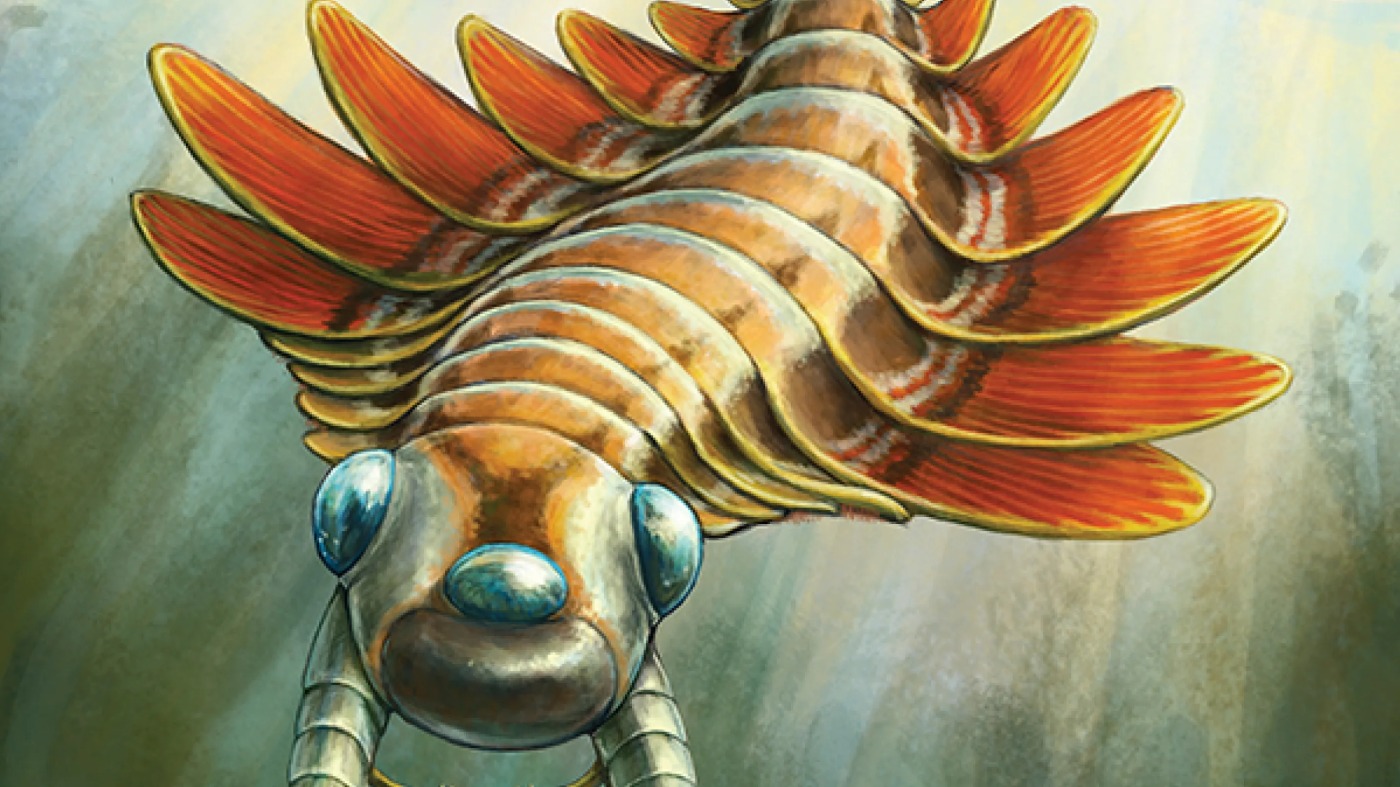Unearthing Mosura fentoni: Insights into a Three-Eyed Predator from 506 Million Years Ago
The fossil record is a time machine, offering poignant glimpses into life forms that once ruled Earth’s primordial oceans. Among such ancient marvels, the discovery of *Mosura fentoni* stands out, not merely as an exotic creature but as a significant actor in understanding arthropod evolution and Cambrian biodiversity. This three-eyed sea moth, dating back over half a billion years, encapsulates evolutionary innovation, sensory adaptation, and ecological complexity, making it an emblem of early marine predation.
Rediscovering an Ancient Predator: The Burgess Shale Connection
The Burgess Shale of Canada is acclaimed for its extraordinary preservation of Cambrian soft-bodied organisms, a veritable treasure trove chronicling the rapid diversification of life around 506 million years ago. Amongst these relics, *Mosura fentoni*’s fossils have emerged as a remarkable find. Meticulous study of over sixty specimens by a consortium of paleontologists from prestigious institutions like the Manitoba Museum and the Royal Ontario Museum has illuminated the creature’s physicality and role within its ancient ecosystem.
This predator’s preservation extends beyond mere external morphology; it provides rare insights into internal structures, including mouthparts, eyes, limbs, and respiratory organs. Such an intricate fossil offers a golden opportunity to piece together evolutionary puzzles that remain hidden in less complete specimens.
Anatomy That Challenges Our Norms
At just the size of a human finger, *Mosura fentoni* is deceptively small but possesses an anatomy packed with evolutionary novelties:
– Triple-Eyed Sensory System: Perhaps the most astonishing feature is the three-eyed arrangement—two lateral eyes and an oversized central eye. This configuration likely afforded the creature enhanced environmental perception. The central eye’s prominence suggests specialized visual processing tailored for a predatory lifestyle, setting it apart from both contemporaneous and modern arthropods.
– Carnivorous Mouth Structure: Its circular, sharp-edged mouth resembles a pencil sharpener, lined with serrated teeth ideal for grasping and shredding prey. This complex oral design underscores an active predatory role, reflecting a level of specialization uncommon in early Cambrian fauna.
– Spiky, Jointed Appendages: The limbs, claw-like and jointed, bear a striking resemblance to those of today’s crustaceans and insects. Such anatomical parallels reflect deep evolutionary roots for these locomotive and predatory adaptations.
– Moth-Like Morphology: Nicknamed the “sea moth,” *Mosura fentoni*’s flattened body with wing-like extensions likely enhanced swimming agility. This feature hints at nuanced locomotion strategies in Cambrian marine environments, underscoring an advanced ecological niche.
– Respiration at the Rear: Unconventionally, this species appears to have respired through its posterior, an evolutionary experiment suggesting diverse respiratory adaptations during this era.
Evolutionary Insights from a Tiny Predator
*Mosura fentoni* enriches the narrative of arthropod evolution through several dimensions:
Refining Arthropod Sensory Evolution
The three-eye system adds depth to our understanding of early visual systems in arthropods. While modern crustaceans and insects possess multiple eyes primarily for spatial orientation, the presence of a conspicuous central eye in *Mosura* indicates a potentially distinct or more sophisticated visual function. This feature could imply heightened prey detection or environmental awareness, demonstrating evolutionary creative solutions to survival challenges.
Neurological Development Across Eons
The extraordinary preservation of *Mosura* and close relatives like *Stanleycaris hirpex* unveils glimpses into early brain and nervous system organization. These findings invite reconsideration of how complex neural architectures—the foundation for behavior and cognition—emerged in arthropods hundreds of millions of years ago.
Ecological Dynamics in Cambrian Seas
Despite its modest size, *Mosura fentoni* was a formidable predator within Cambrian food webs. Its specialized morphology reflects evolved predatory tactics, revealing the sophistication and dynamic interactions that characterized one of Earth’s earliest complex ecosystems.
Parallels and Departures: Comparing Past and Present Arthropods
Though no modern creature perfectly mirrors *Mosura fentoni*, evolutionary threads link ancient and current arthropods:
– The design of spiked, jointed claws persists in numerous contemporary species, outlining a successful evolutionary strategy in limb function.
– Multiple eyes continue to be a trait among several modern marine animals; however, *Mosura*’s unique three-eyed arrangement remains enigmatic and likely catered to specific Cambrian environmental demands.
– The posterior respiratory mechanism, extraordinary for its time, appears to have been an evolutionary detour rather than a lasting solution, offering compelling insights into the diversity of early anatomical experimentation.
Reflecting on Biological Innovation in Deep Time
The tale of *Mosura fentoni* transcends paleontological discovery—it symbolizes life’s capacity for innovation during the Cambrian explosion. This small but intricate predator broadens our lens on how crucial anatomical features, sensory adaptations, and ecological roles coalesced to shape the evolutionary trajectory of arthropods, one of the planet’s most diverse animal groups.
Studying *Mosura fentoni* reminds us that early evolutionary periods were marked not by linear progress but by sprawling experimentation, from which modern biodiversity ultimately emerged. Each fossil unearthed is a chapter of that grand story, with this three-eyed sea moth reminding us of the ingenuity present in life’s ancient seas.
—
*Mosura fentoni* opens a window into an ancient world where sensory adaptation, predatory specialization, and anatomical novelty converged, illuminating paths that evolution once explored. This discovery enriches our understanding of life’s formative chapters and the deep evolutionary roots of the complexity seen in today’s oceans.
—
Elevate your English articles with expert editing that crafts clear, engaging, and structured content—perfect for deep analyses like your Mosura fentoni report.

